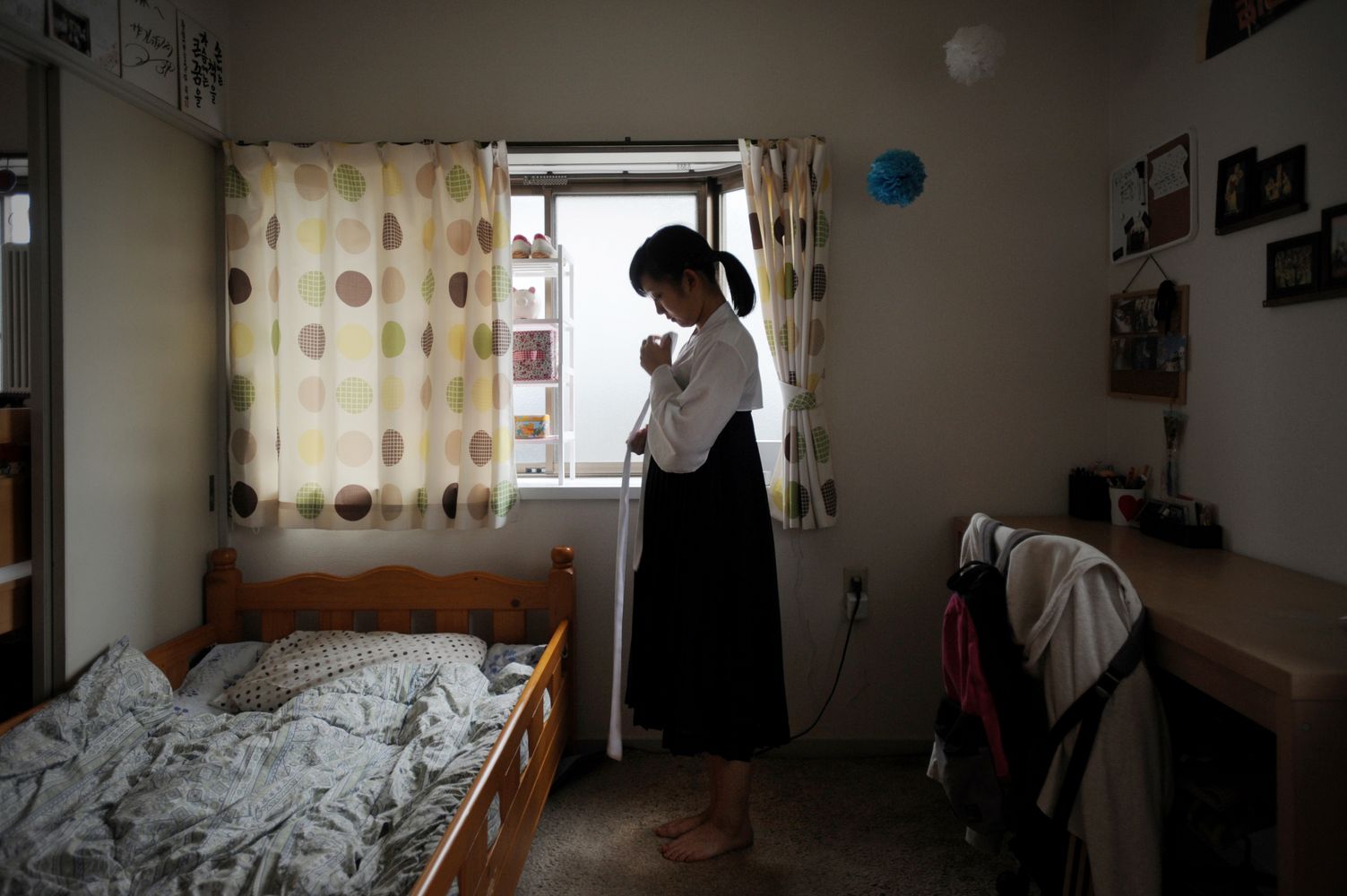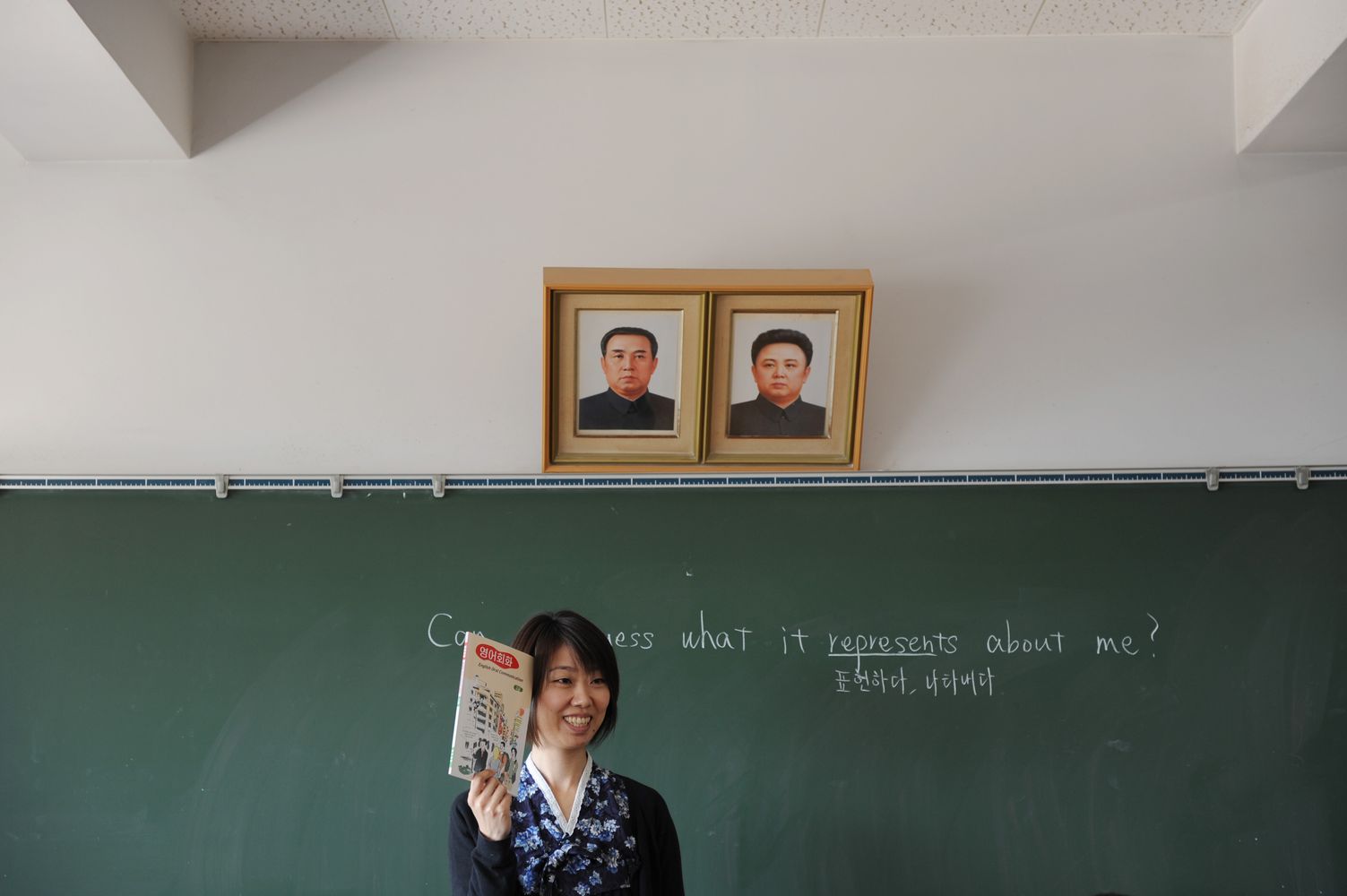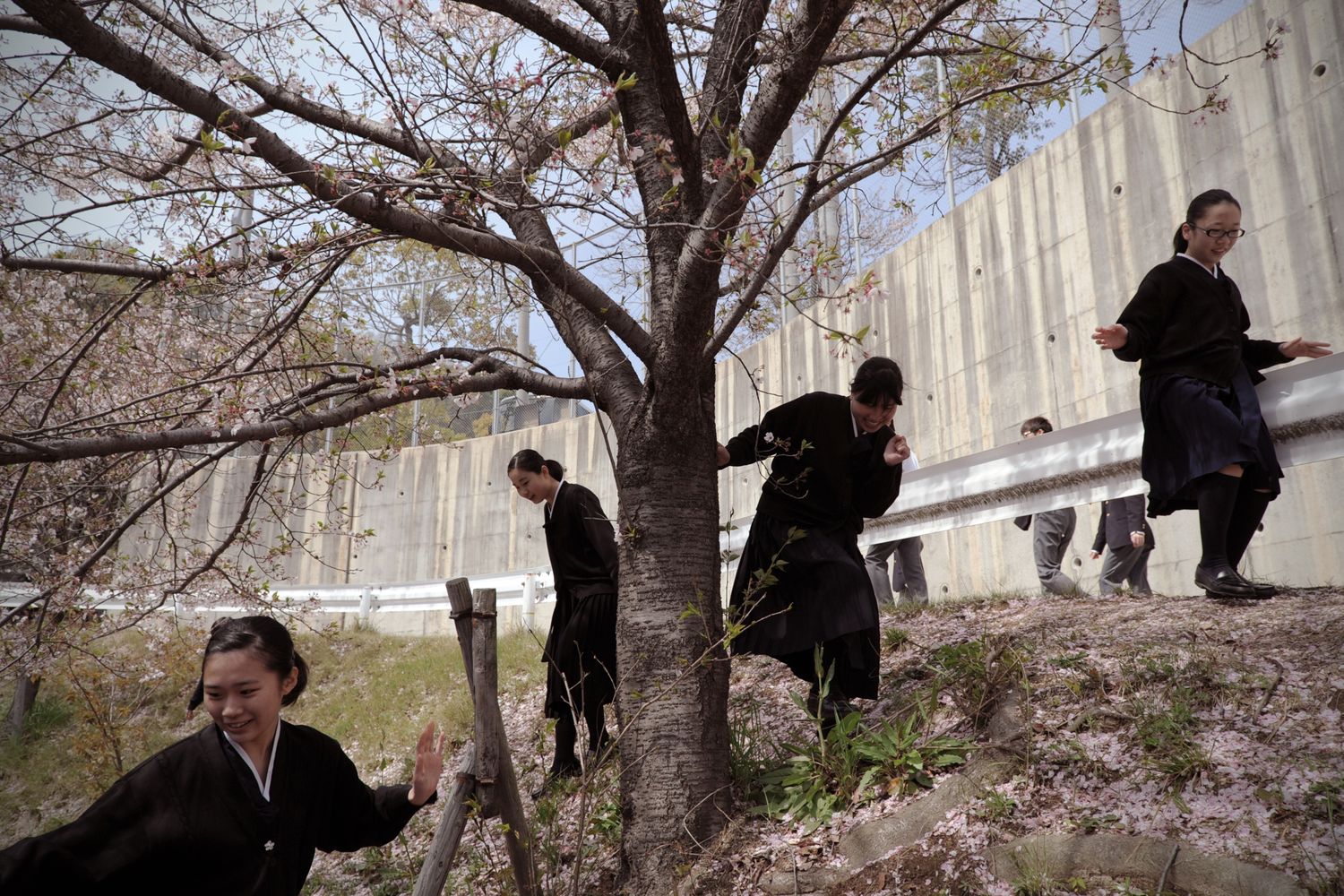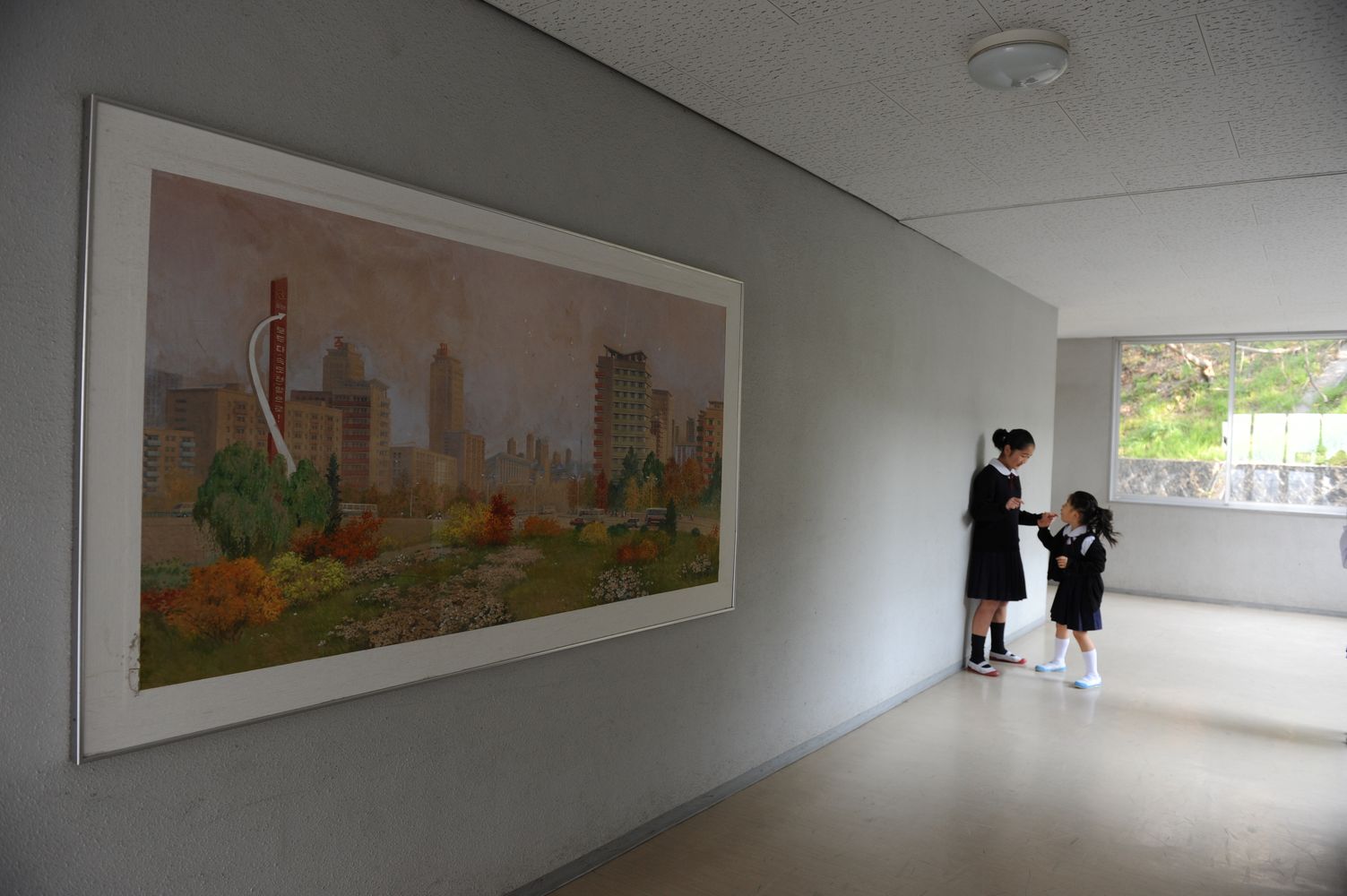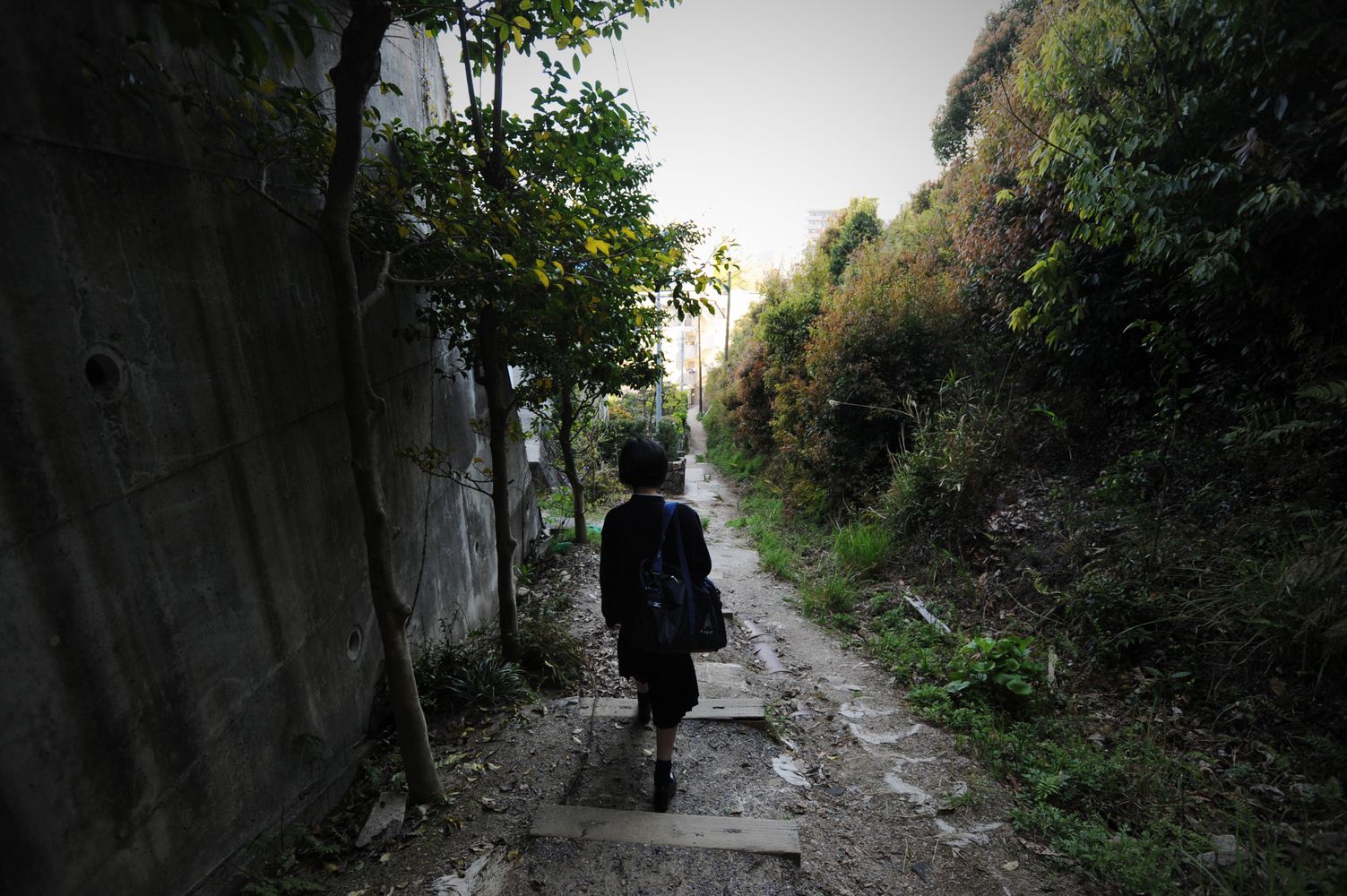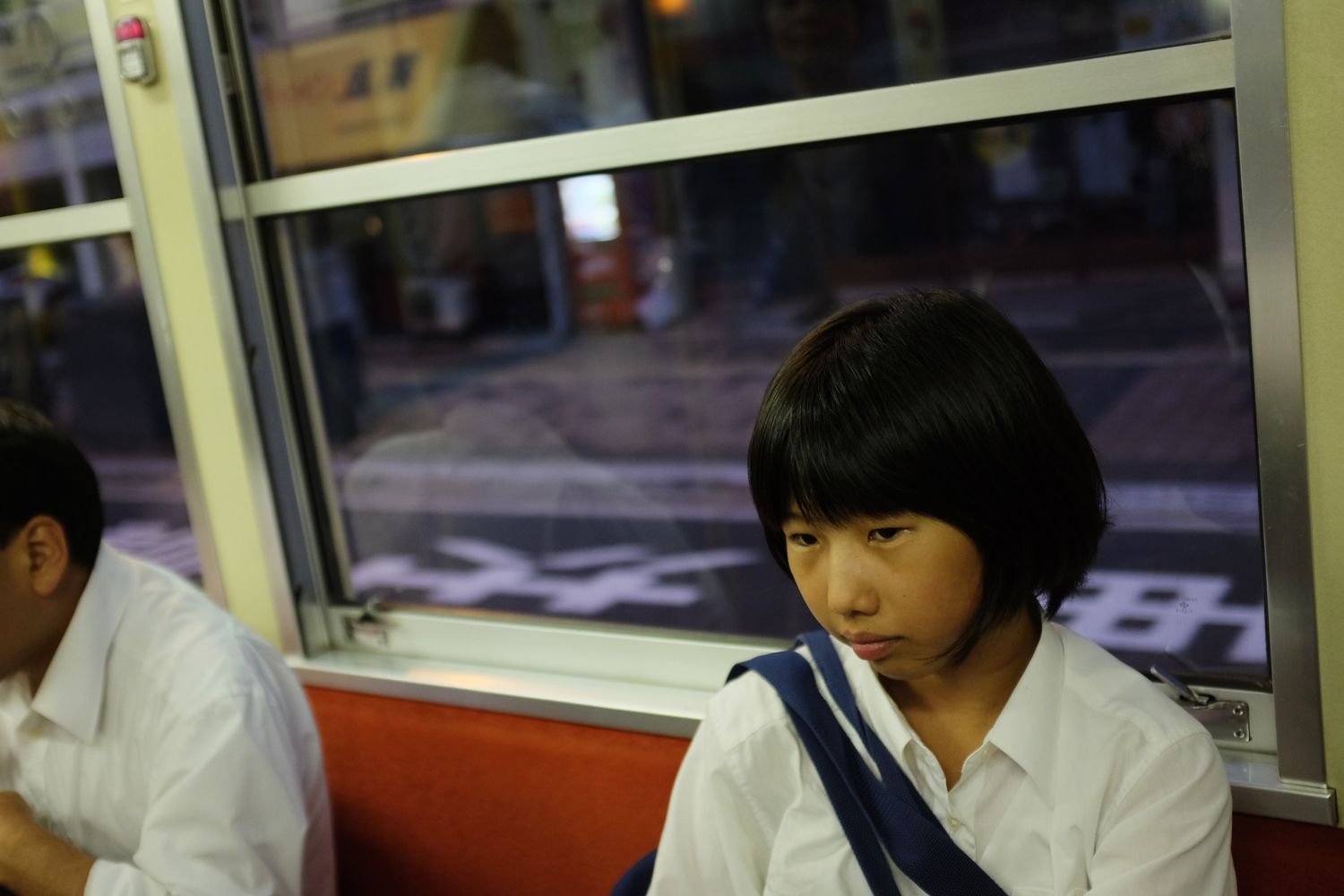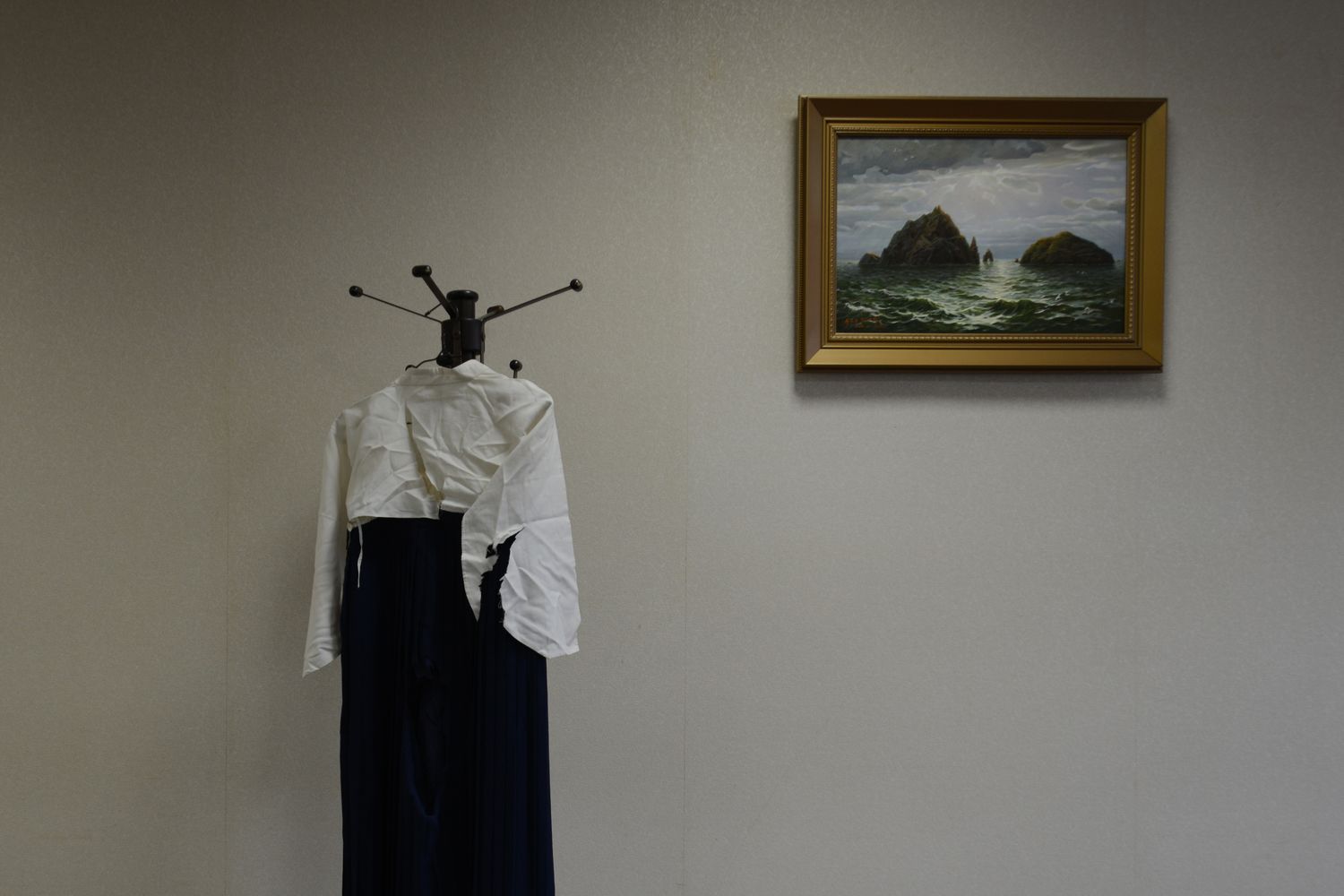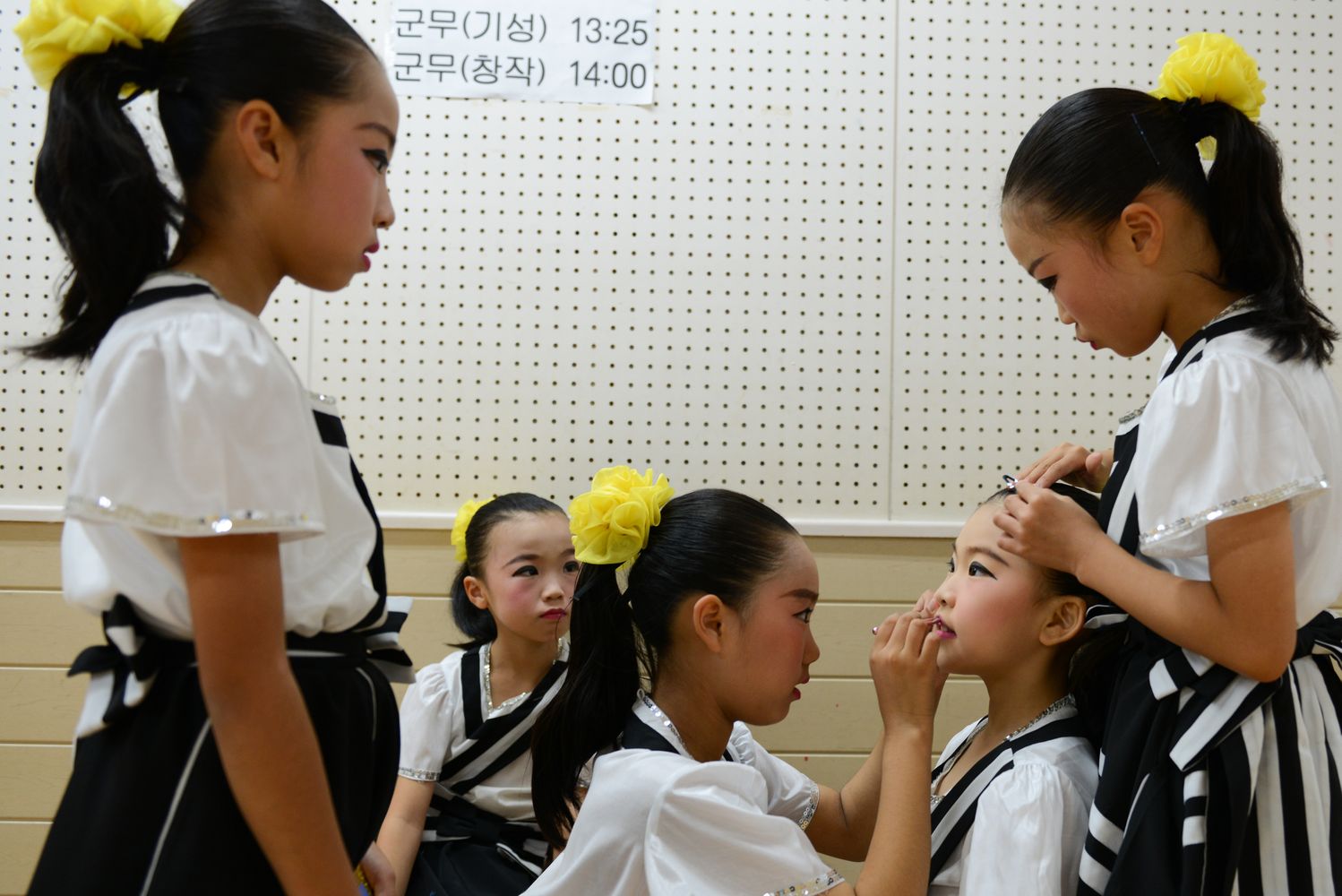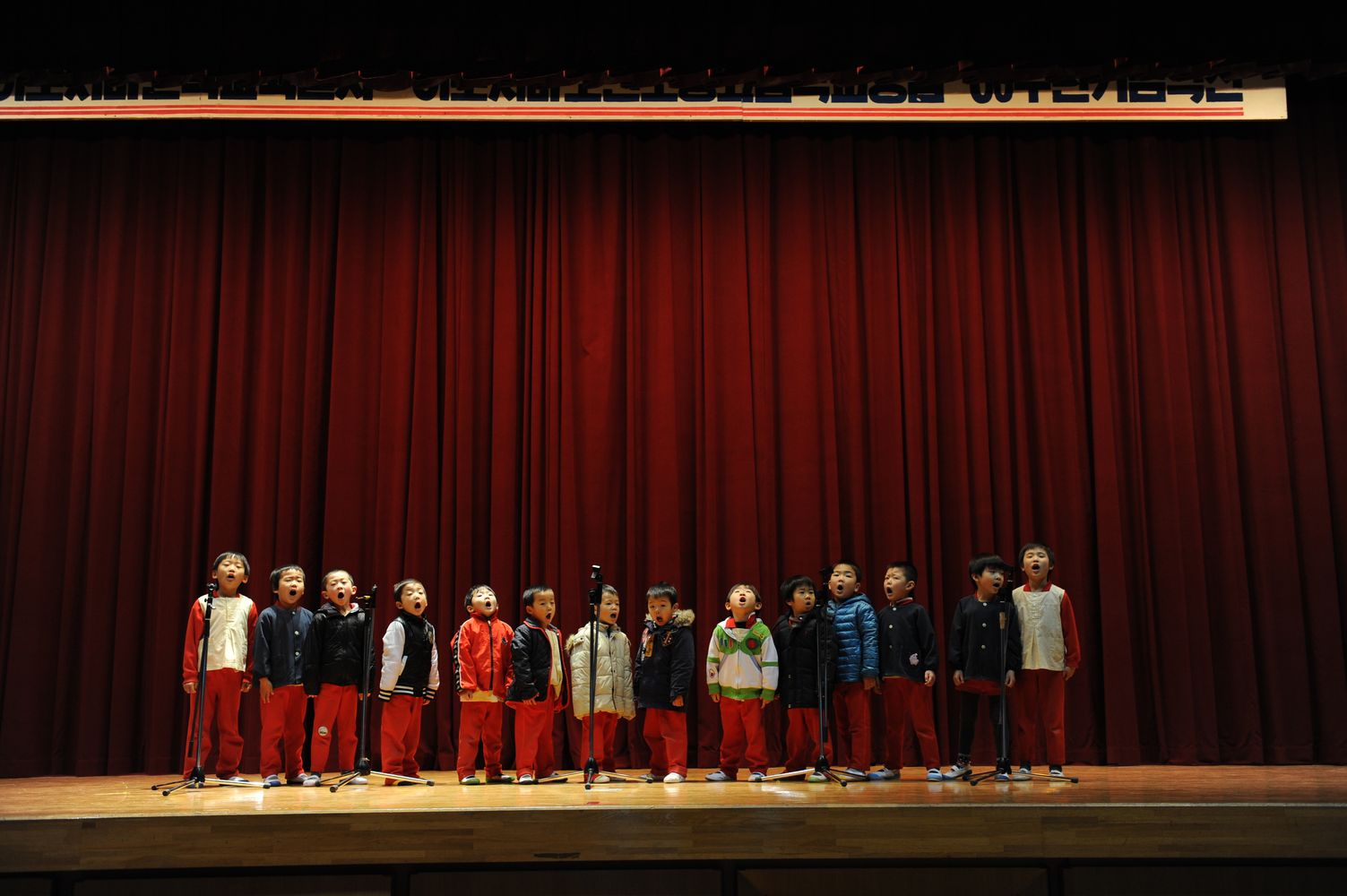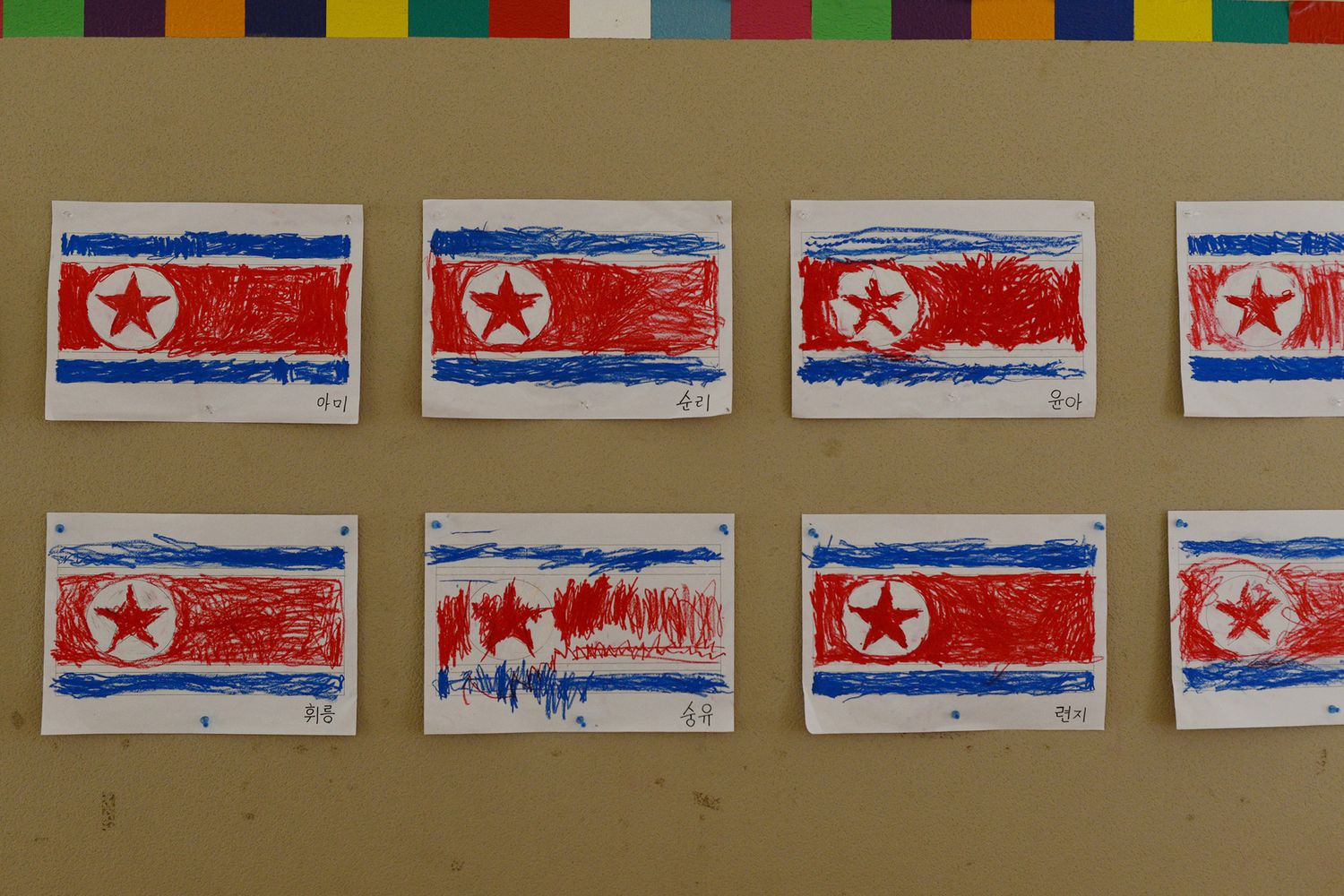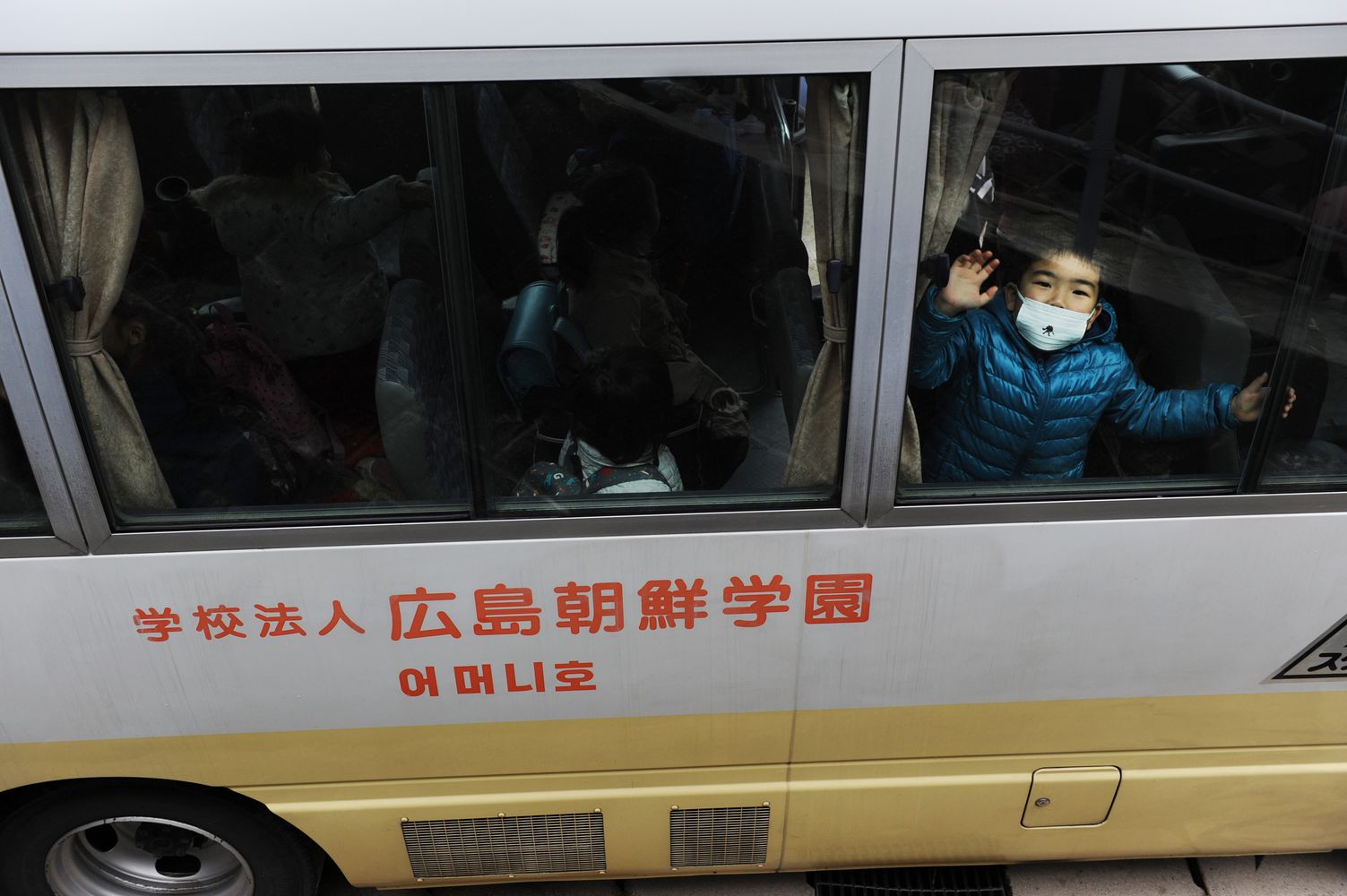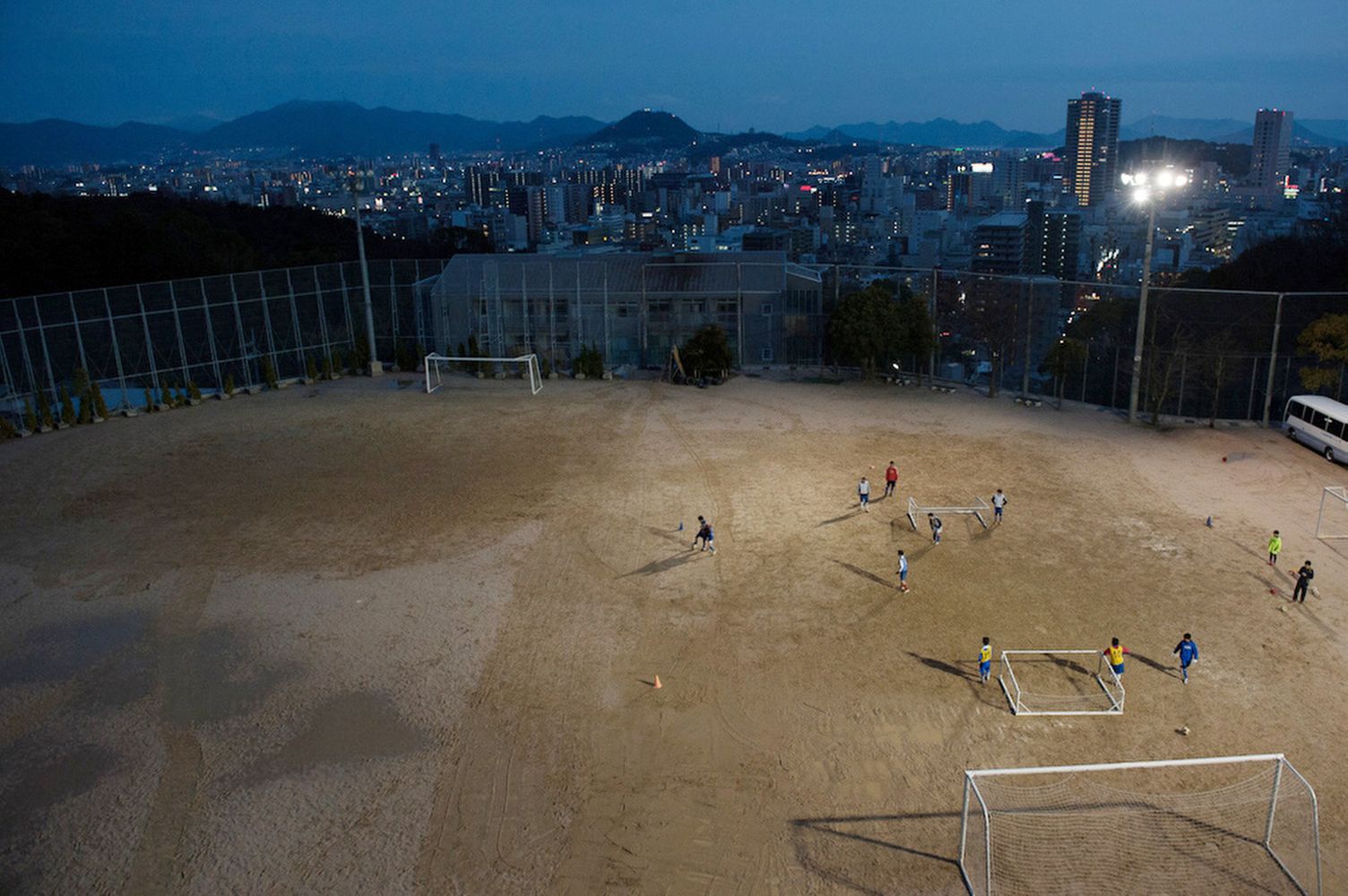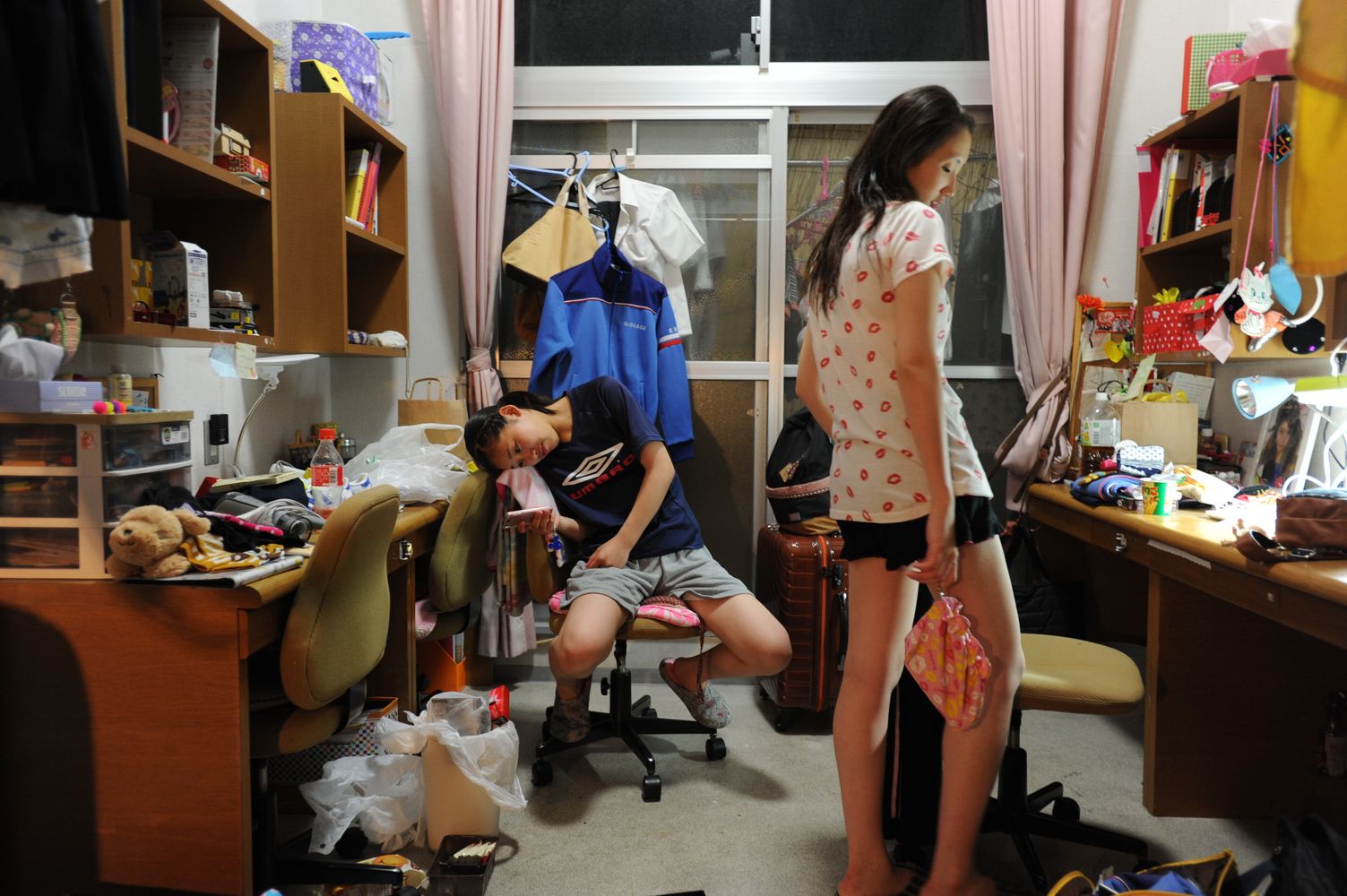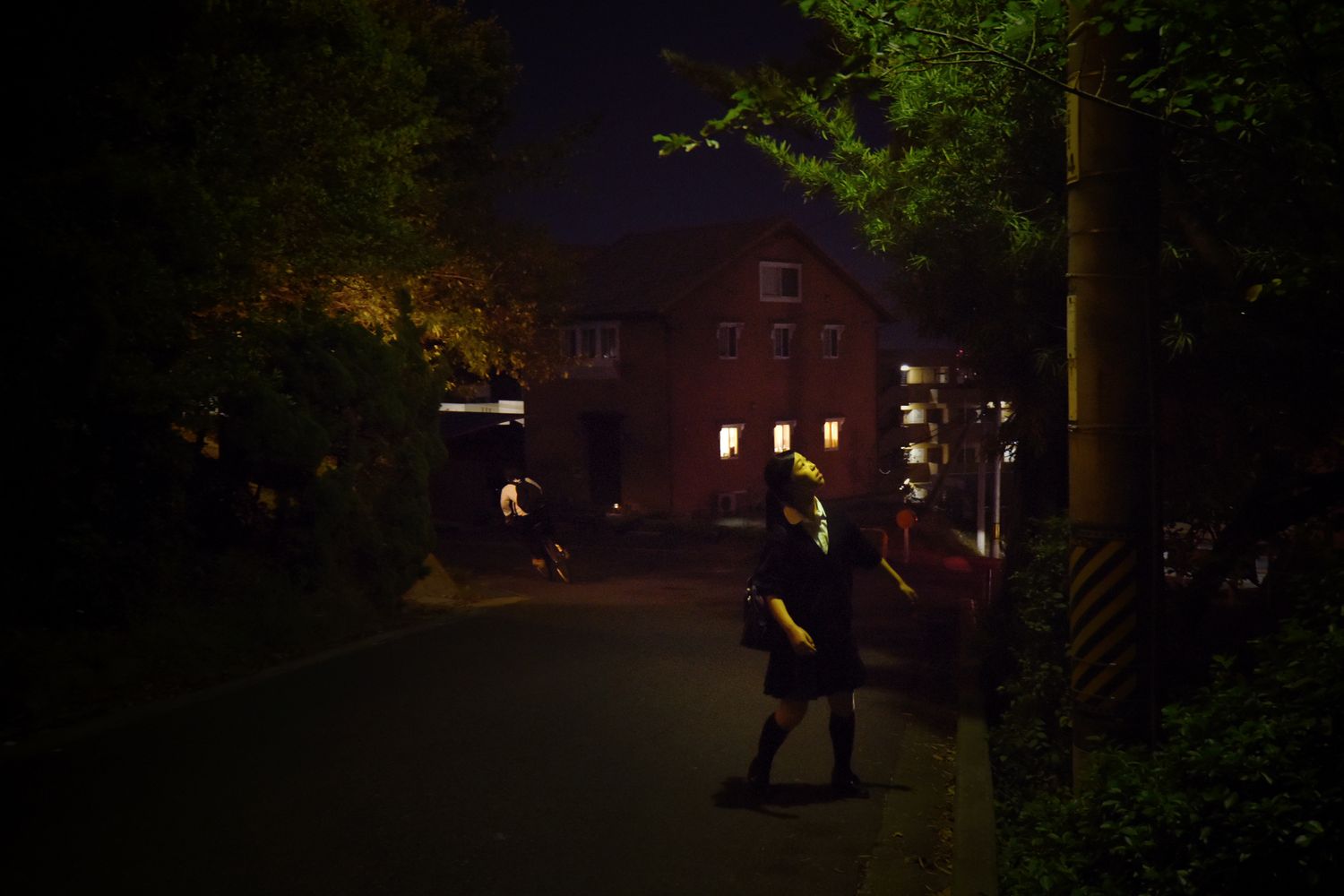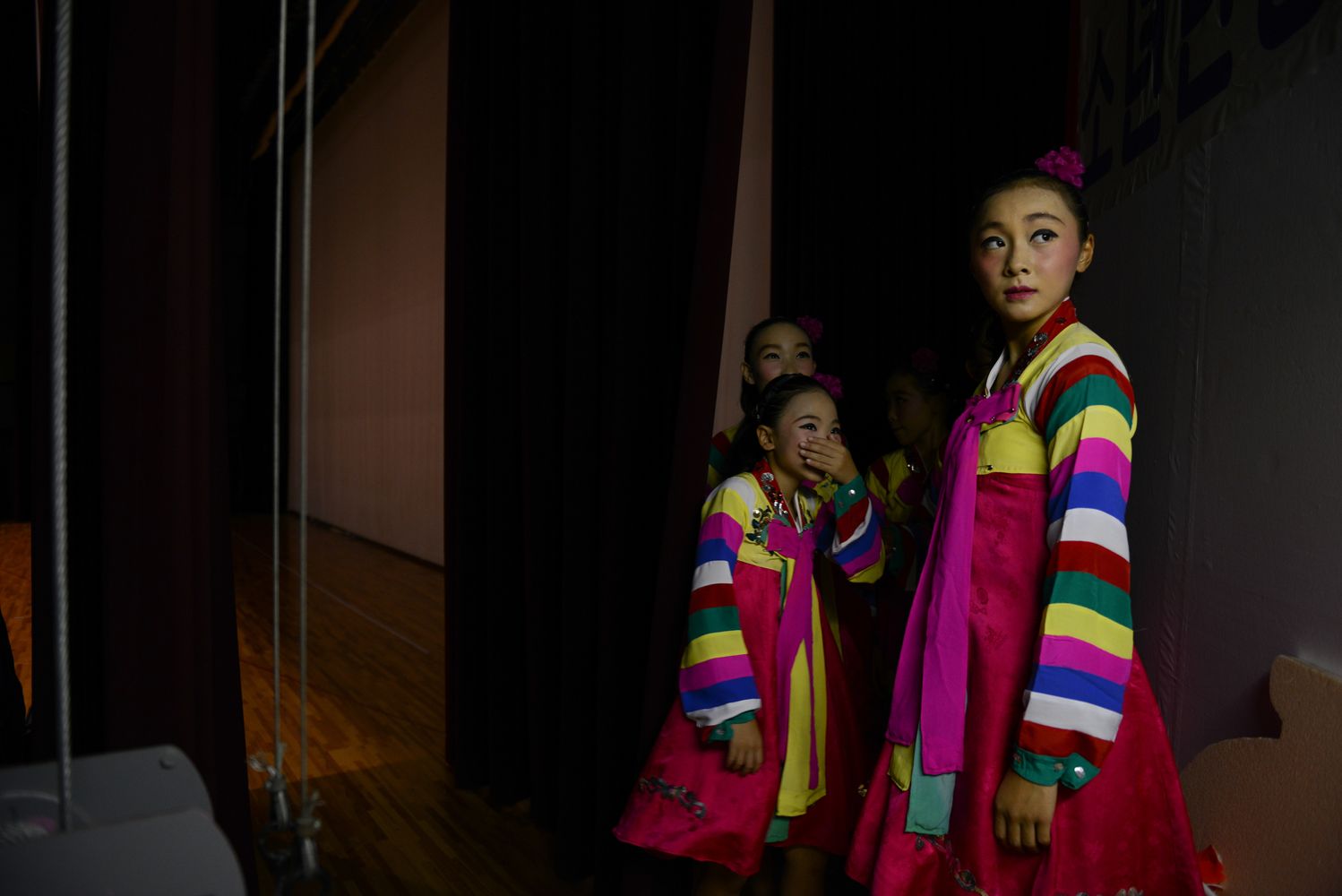Japan's invisible minority
-
A high school girl of Korean school wears Chima-Jeogori-style uniform, (Korean traditional female clothes) at home. Due to discrimination against female students of Korean school who wear the uniform in public places, many students are now wearing 2nd uniform that looks like other Japanese high school unform.
-
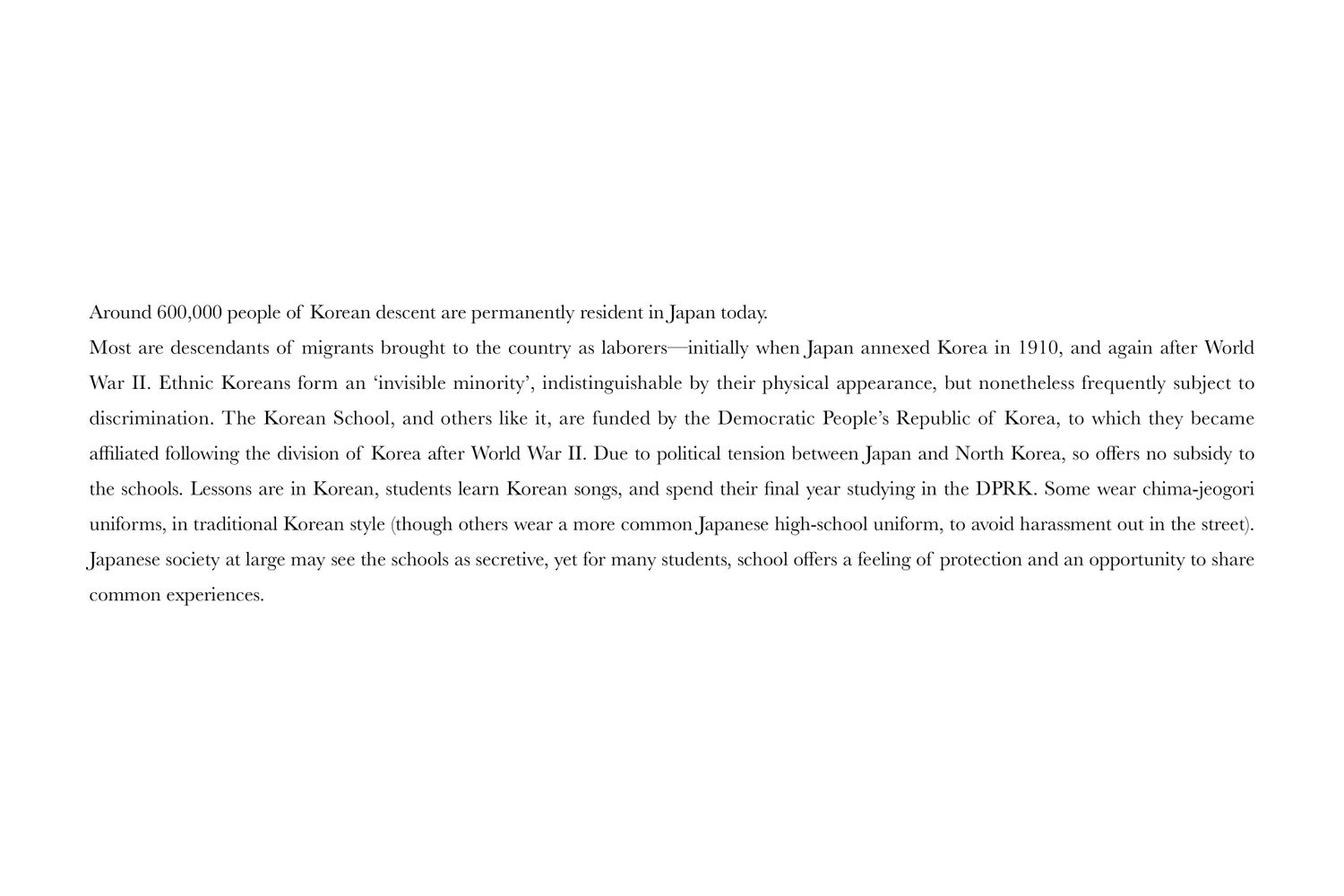
-
An English teacher gives lesson in a classroom.
-
High school girl of Korean school play under the cherry blossom tree in Spring.
-
Painting of Pyongyang is displayed at the hallway of the Korean school
-
A student walks on the small narrowed street after school. The street directly connects the school and main road near station.
-
A Korean school student with 2nd uniform sitting in a tram and goes back home after school.
-
An old Chima-Jeogori uniform (Korean traditional female clothes) from 1990s which was cut off by strangers is remained in a room at the school president’s room. In the mid-1990s, more than 20 (there is also a report saying that more than 100) female student’s school uniform was cut off in the trains, street, station and other public places. Due to this incident, most of the students decided to wear 2nd uniform instead of traditional Korean style school uniform.
-
Elementary school members of traditional Korean dance club putting make-up for the Arts competition festival.
-
Children of Hiroshima Korean kindergarten school practice singing for art festival.
-
Flags of DPRK which children of Korean Kindergarten drawn are displayed on the wall in the school.
-
A kindergarden child of Korean school sitting in a school bus after school.
-
The view of school ground is seen from the top of the school building.
-
High school students prepare for the school trip to North Korea in a school dormitory the bay before the departure.
-
A Korean school student walks around her neighborhood after school.
-
Elementary school students who are the members of traditional Korean dance club getting ready for performance behind the stage for the Arts competition.
